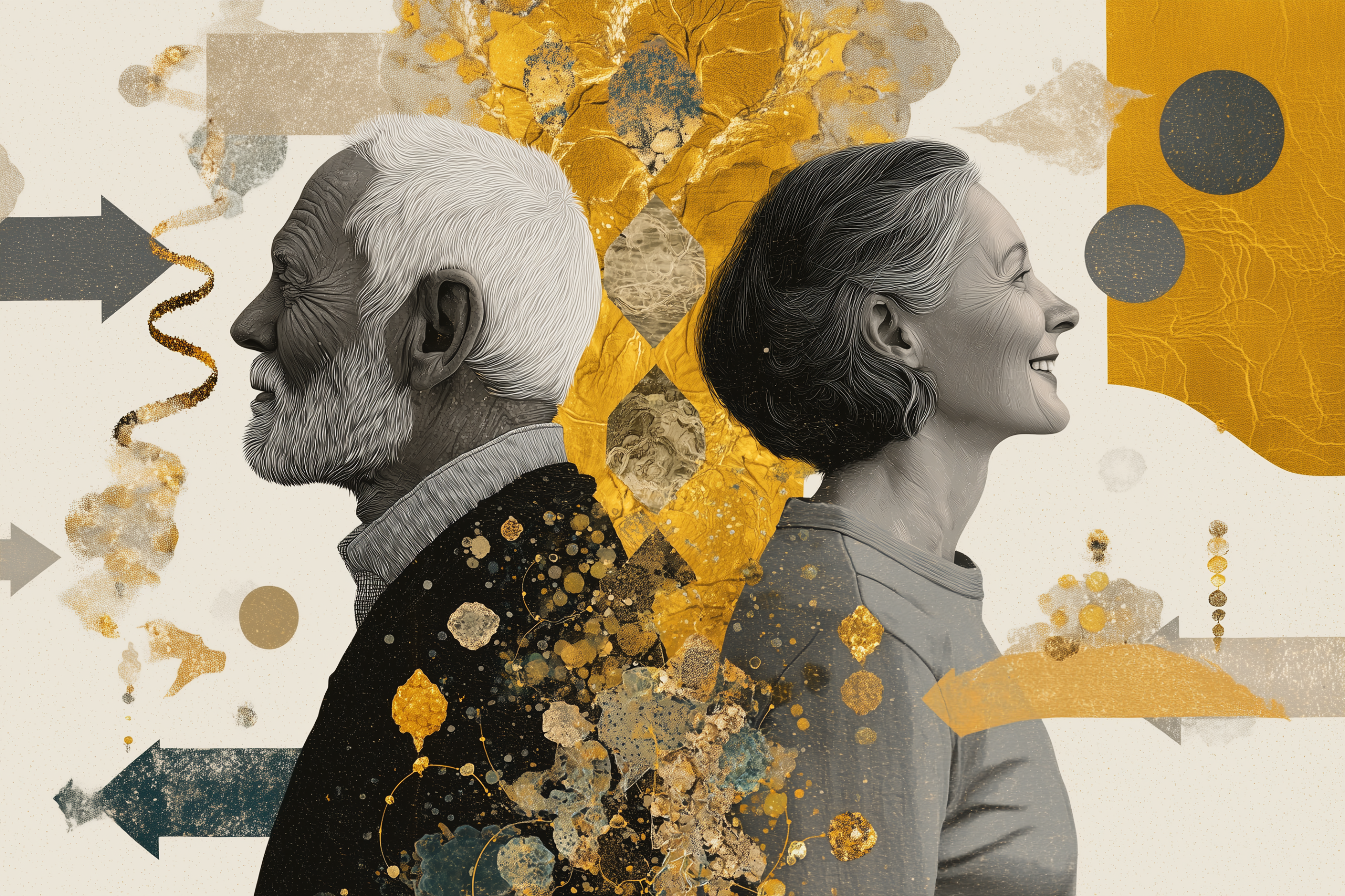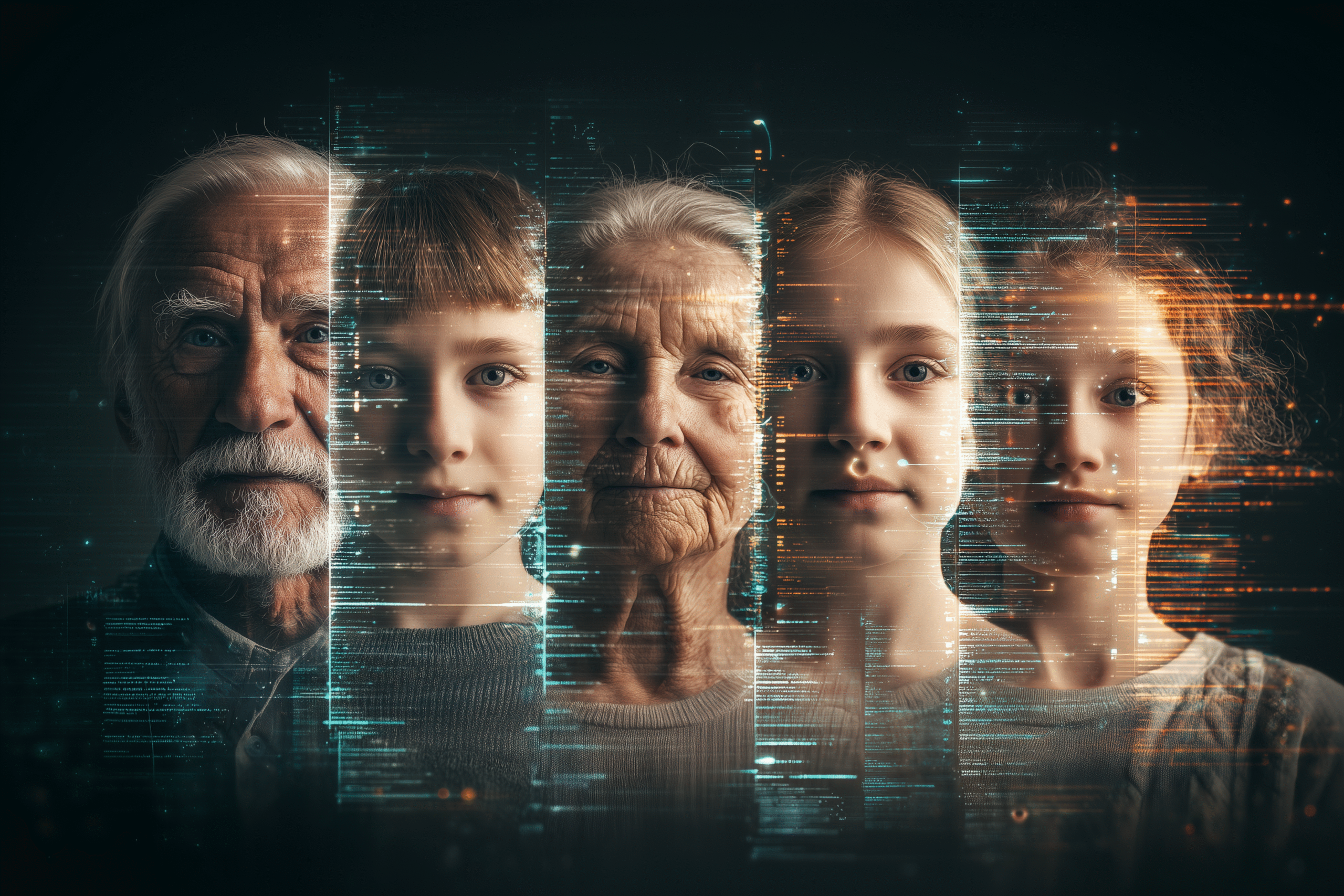The healthiest thing you can do for your family might be to stop talking about health entirely.
Note: This article is for educational and informational purposes only. See full disclaimer at the end.
You’ve been at this for weeks, maybe months. Morning walks feel natural. Sleep is dialed in. Choices that once felt impossible are now becoming second nature.
Here’s what almost no one tells you about personal transformation: it exerts a gravitational pull. People around you start to drift into your orbit, not because you persuade them, but because your consistency changes what “normal” looks like.
Something shifts when you stop convincing and simply become. Your sister asks about your wind-down routine because you no longer crash at 3 PM. Your partner joins evening walks without prompting. The neighbor who used to wave from his porch now asks to tag along.
This isn’t about becoming a health evangelist. It’s about a simple truth that public-health research has observed for decades: health behaviors spread across social networks like ripples on water. One person’s steady practice can be a surprisingly potent public-health intervention [1][3].
Gravity doesn’t announce itself. It just pulls.

The Science of Health Contagion
Nicholas Christakis and James Fowler showed that behaviors can diffuse up to three degrees: friends, friends-of-friends, and even one more hop beyond that [3]. It’s not just a metaphor; it has been measured in multiple domains.
Why does this happen? Humans are wired for social mirroring. We unconsciously echo the emotions and micro-behaviors we see [5]. When your family watches you regulate stress, their internal models update. When colleagues see you take a real lunch break, the office norm shifts by a notch. Small observations, repeated often, become environmental gravity.
The effect is strongest inside families. Modeling beats lecturing. When parents live the behavior, kids adopt it at higher rates and carry it forward [6][7][8]. Over time those patterns form a family “health climate” that either traps generations in risk or lifts them toward protective habits [7].
This mirroring extends beyond physical health. When parents model anxiety, children’s stress responses calibrate to match [10].
But here’s the hope: when you demonstrate calm problem-solving instead of panic, when you breathe through frustration instead of exploding, you’re literally rewiring your children’s stress response systems.
They don’t just learn what you teach, they become how you behave.
The Family Laboratory
Home is the first lab for conscious health. Every plate you build, every walk you take, every time you choose bedtime over one more episode—these are demonstrations, not demands. Together they create a “family health environment” that makes healthy choices obvious and accessible [7][12].
Consider Isabel, 42, who started quietly. She didn’t announce a revolution or purge the pantry. She cooked a little extra of the vegetables she was already eating. She left walking shoes by the door. Lights out at 10 PM, consistently.
Her kitchen transformed first, not the cabinets, but the air itself. Gone was the acrid smell of microwave plastic. Now: onions caramelizing, garlic hitting hot oil, the green scent of fresh herbs from the windowsill garden.
Three months later, no speeches, no rules:
Her husband joined morning walks “to keep her company.”
Her 14-year-old asked for the “good vegetables.”
Her 17-year-old started shutting screens at 9:30 PM.
The grocery cart shifted—more whole food, fewer ultra-processed options.
That’s environmental architecture in action: make the healthy choice the easy, visible, default choice [12].
No speeches. No rules. Just visibility.
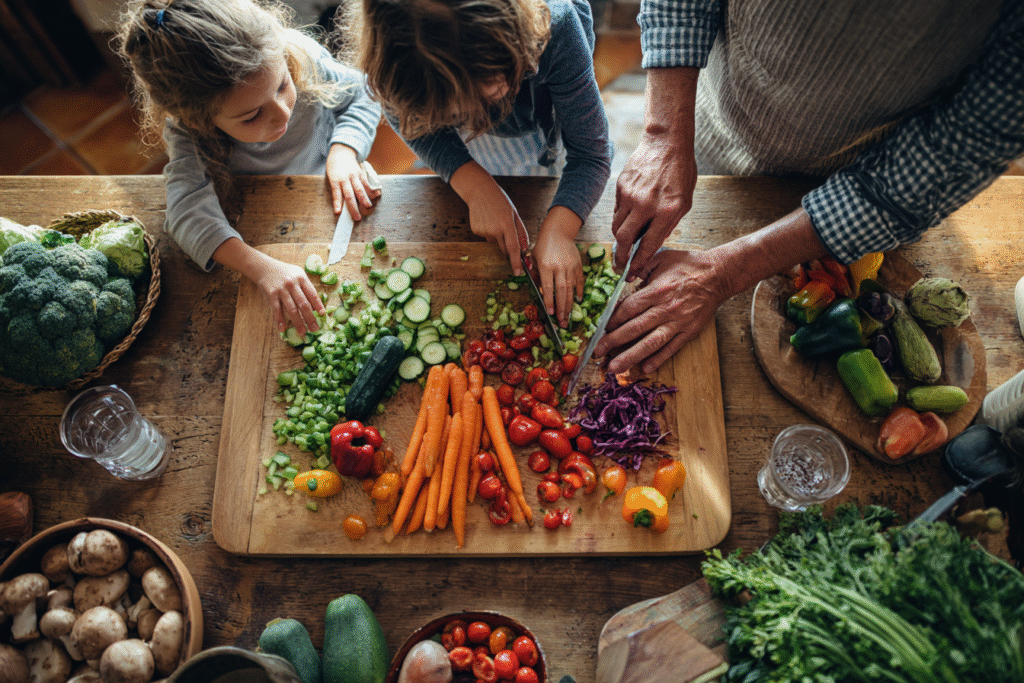
Breaking the Inheritance
Families pass down health patterns like heirlooms—some cherished, some heavy. You might inherit Sunday dinners alongside a tendency toward insulin resistance. Here’s the hope: while genes set the stage, lifestyle influences which scripts get performed. Epigenetic research shows that daily choices can modulate gene expression [8].
Picture a father with a family history of heart disease who walks 30 minutes a day. His kids see movement as a normal stress strategy, not a rare chore. Decades later, when life gets demanding, they have a lived template to return to. The genetic risk may remain; its expression can change.
The Paradox of Influence
The less you push, the more you pull. The moment you become the family health police, resistance shows up. Live your choices without judgment or evangelism and curiosity follows.
This extends beyond family. Change often spreads well through “weak ties”—casual acquaintances who don’t expect you to influence them [2]. A passing mention of your improved sleep lands as a possibility rather than a pressure.
Think about it: your best friend already knows your struggles, your excuses, your patterns. They’ve heard it all before. But the coworker you barely know? When they mention casually that they’ve been sleeping better since they started their evening routine, you listen differently. There’s no baggage, no history of failed attempts together. Their success feels possible because you don’t know their struggles—you only see the result. That’s why the guy from your coffee shop who lost 50 pounds influences you more than your sister who’s been trying to get you to exercise for years.
At work, you don’t need a wellness committee. Take a full lunch. Walk at 3 PM. Keep a water bottle at your desk. Sociologists call these “permission structures.” People see them and file away: “That’s allowed here.”
Community as Immune System
Influence is ecological, not linear. Your practice reshapes your family; families reshape neighborhoods; neighborhoods nudge city norms [11]. Communities with dense social connection show better health outcomes across multiple measures [15][17][18][19].
The reason isn’t only crisis support. It’s that behaviors become environmental signals. You see neighbors garden; you plant herbs. The café adds healthier options because people keep asking. Parents organize walking school buses and daily movement becomes embedded for kids.
The overlooked lever is connection density. One of the strongest predictors of community wellbeing is the frequency of positive micro-interactions among residents [18][19].
You know change is spreading when the neighborhood sounds different. Lawnmowers starting earlier as people make time for evening walks. Children’s voices in the street until dusk. The clink of weights in garages. The collective exhale of a block learning to breathe again.
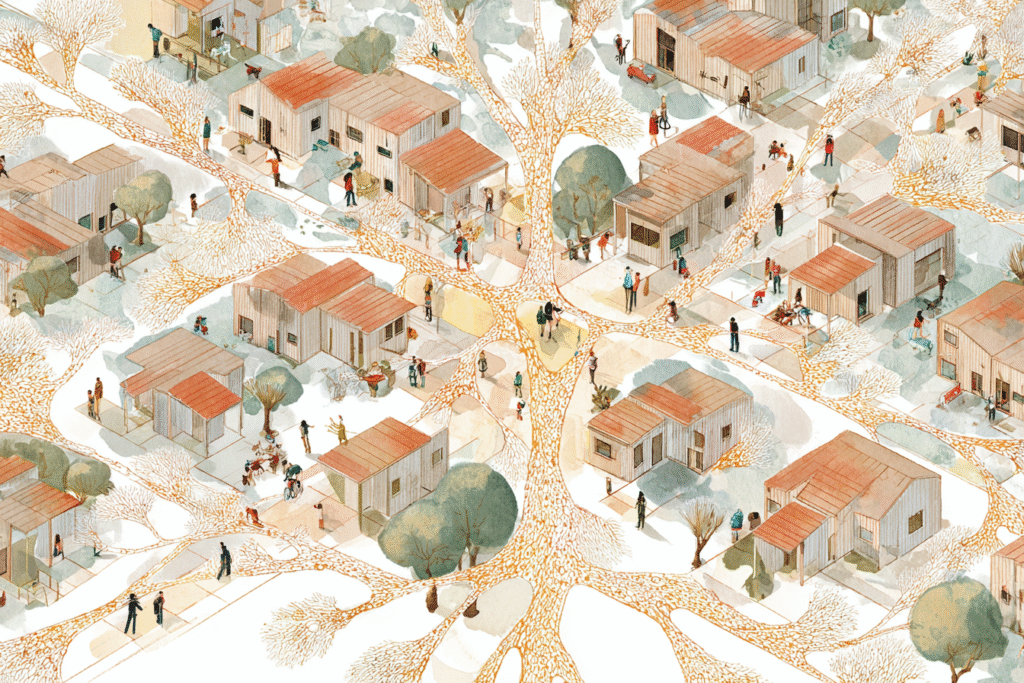
The Three-Generation View
Indigenous wisdom asks us to think seven generations ahead. Three is immediately practical. Your choices affect your parents (upstream), you (present), and your children (downstream).
Your progress can unlock possibility for aging parents—“Maybe my arthritis isn’t inevitable.” Meanwhile your kids absorb durable lessons: bodies are cared for, food is fuel, movement is joy. These early impressions set adult defaults [8].
The Multiplication Effect
When several family members make small changes together, the effects don’t just add; they reinforce. Researchers describe reciprocal reinforcement inside family systems: each person’s progress strengthens the others’ ability to maintain the habit [7]. You don’t need perfect synchronization—only visible support and steady modeling.
The Martinez family started with Elena addressing pre-diabetes. Carlos ate with her “to be supportive.” Their adult daughter began Sunday meal prep. Their teenage son chose different snacks because that’s what was in the pantry. Six months later: Elena reversed her pre-diabetes, Carlos dropped weight he’d carried for years, their daughter’s energy improved, and their son’s skin calmed. No rules. Just a new family culture.
The Resistance Points
Let’s name the predictable bumps so they don’t derail you:
Saboteur Phase
The first test comes as donuts. Your brother brings a dozen to Sunday dinner, making a show of the purchase. “Treat yourself,” he says, but his eyes say something else: “Stop making me look bad.” This isn’t malice, it’s mirror pain. Your change reflects back what he’s avoiding. Keep eating your planned meal. Thank him warmly. Let the donuts sit there, untouched and unmentioned. Consistency speaks louder than confrontation.
Backslide Moment
Holidays, crises, or illness interrupt routines. Treat them as pauses. Pre-decide your re-entry: simplest version of your habit, tonight.
The Eye-Roll
Anyone can weaponize every eye muscle against anything that resembles a health lecture. So don’t lecture. Stock the fridge with grab-and-go options that happen to be nutritious. Cook meals that smell incredible. When they asks what smells so good, keep the answer short: “Dinner.” Let hunger and flavor do the teaching. One day you’ll catch them making the same recipe, swearing it’s nothing like what you used to make.
Extended-Family Friction
Traditions can feel sacred. Add rather than replace. Bring a stunning salad. Suggest a post-dinner walk. New rituals can coexist with old ones.
Sometimes it doesn’t work. Someone can transform their health completely—lose 60 pounds, reverse pre-diabetes, find energy they hadn’t felt in decades. Their family? Unchanged.
Change doesn’t always flow where you expect. Sometimes it skips a generation. Sometimes it takes a decade to germinate. Sometimes the person you influence is someone you haven’t met yet.
Persistence is the only response that matters.

Chosen Family and Constructed Community
Not everyone has a supportive biological family. Chosen family matters—a workout buddy who becomes a confidant, neighbors who walk at sunrise, an online group that celebrates small wins. Voluntary ties can rival or exceed the influence of kin because they’re selected for alignment and “optimal challenge” [4].
Simple formats work:
Three neighbors who walk each morning.
A weekend hike group born from one neighborhood post.
A monthly meal-prep club.
A “sleep thread” where friends share wind-down wins.
These micro-communities become test labs. Someone shares a recipe. Another demos a meditation app. Useful ideas circulate.
Your neighborhood walking group has a WhatsApp thread. Your kitchen transformation lives on Instagram. Your morning routine inspires someone you’ve never met.
Physical and digital have merged.
The Digital Dimension
Your community isn’t just physical. A single post about your morning run can nudge someone three time zones away. The key is intention. You don’t need to become an influencer. Share authentically. Normalize restarts. The “I fell off and began again” post may help more people than the personal-record highlight.
Your 5 AM workout selfie—hair wild, face flushed, grimacing—gets more responses than your polished posts ever did. “If you can do it looking like that, maybe I can too,” writes someone you haven’t talked to since high school.
The Economics of Scaled Health
Healthier families often spend less over time. As multiple members improve habits, cost curves bend: fewer medications and urgent visits, more planned groceries, fewer convenience purchases, fewer sick days [9].
One family tracked savings of thousands of dollars per year and redirected the surplus to experiences and education. The return compounds.

The Practical Architecture
Here’s a simple cadence that scales without speeches or crusades:
Weeks 1–4: Build Your Base
Live your practices. Make them visible, not verbal.
Weeks 5–8: Environmental Invitations
Cook extra portions of the healthy thing.
Keep walking shoes by the door.
Play energizing morning music.
Make healthy snacks visible at eye level.
Weeks 9–12: Shared Rituals
Suggest a short post-dinner walk.
Try “no phones during meals” as an experiment.
Start a Sunday meal-prep hour.
Create a gentle household wind-down.
Months 4–6: Widen the Circle
Invite a neighbor for a walking meeting.
Share a favorite recipe with a friend.
Start a workplace lunch-walk.
Join or seed a community garden plot.
Months 7–12: Normalize Together
Host simple neighborhood activities.
Share resources freely.
Celebrate others’ wins.
Model consistency during difficult weeks.

The Long Game
This isn’t a project with a finish line. It’s an infinite game where the goal is to keep playing and include more players. Some ripples show up tomorrow—your partner joins your routine. Others emerge years later—your college-age kid chooses water over soda because that’s what has always felt normal.
The research points to a simple predictor of adult health habits: the health climate of the childhood home [7][8]. Not genes alone. Not income alone. Environment—thousands of small moments observed and absorbed.
The Unintended Leader
Leadership shows up whether you want it or not. Live consistently and you become an “unintended influencer.” People watch. They notice. They experiment.
The colleague who starts taking lunch after months of watching you. The neighbor who plants tomatoes after admiring your garden. The friend who finally prioritizes sleep after hearing you talk about your evening routine like it’s regular life.
You’re not responsible for their choices—only for your example. Not a perfect example. A human one. Visible effort. Honest restarts. Steady persistence.
You’re already leading. The only question is where.
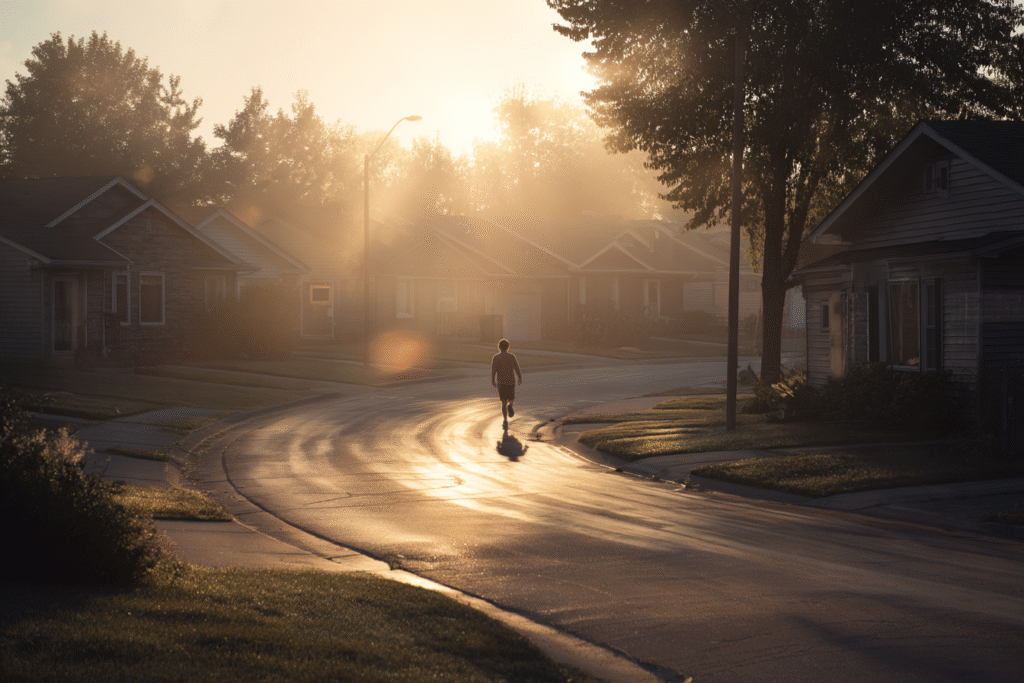
Beyond Individual Achievement
Wellness is often framed as solo achievement: my body, my goals. Conscious health sees something deeper: we heal in community and sustain change through connection. Individual health without ecosystem support is like a plant without soil or rain.
Scaling conscious health—from self to family to community—is how culture shifts. It’s slow until it’s sudden. Invisible until it’s everywhere. Each choice sets a path someone else can follow, not because you led them, but because you showed the path exists.
You don’t need to be perfect. You don’t need to teach. You don’t need all the answers. Be consistent, visible, and human. Let the scaling happen.
Health spreads at the speed of example. The quiet patterns you repeat today become someone else’s starting line tomorrow.
See you in the next insight.
Comprehensive Medical Disclaimer: The insights, frameworks, and recommendations shared in this article are for educational and informational purposes only. They represent a synthesis of research, technology applications, and personal optimization strategies, not medical advice. Individual health needs vary significantly, and what works for one person may not be appropriate for another. Always consult with qualified healthcare professionals before making any significant changes to your lifestyle, nutrition, exercise routine, supplement regimen, or medical treatments. This content does not replace professional medical diagnosis, treatment, or care. If you have specific health concerns or conditions, seek guidance from licensed healthcare practitioners familiar with your individual circumstances.
References
The references below are organized by study type. Peer-reviewed research provides the primary evidence base, while systematic reviews synthesize findings.
Peer-Reviewed/Academic Sources
- [1] Eisenberger, N. I., & Cole, S. W. (2012). Social interactions can affect health in many ways. A prime example is contagion, in which a disease or condition spreads among people in close contact. PMC – National Center for Biotechnology Information. https://pmc.ncbi.nlm.nih.gov/articles/PMC4381550/
- [2] Fletcher, J., & Marksteiner, R. (2021). Transmission of vaccination attitudes and uptake based on social contagion theory: A scoping review. Vaccines, 9(6), 607. https://www.mdpi.com/2076-393X/9/6/607
- [3] Christakis, N. A., & Fowler, J. H. (2013). Social contagion theory: Examining dynamic social networks and human behavior. PMC – National Center for Biotechnology Information. https://pmc.ncbi.nlm.nih.gov/articles/PMC3830455/
- [4] Hatfield, E., Cacioppo, J. T., & Rapson, R. L. (2006). Contagious behavior: The unconscious transmission of actions or emotions from one individual to another. Psychological Science Observer. https://www.psychologicalscience.org/observer/contagious-behavior
- [5] Winerman, L. (2022). Positive emotions and behaviors are contagious. Michigan State University Extension. https://www.canr.msu.edu/news/positive_emotions_and_behaviors_are_contagious
- [6] Ostbye, T., Malhotra, R., & Landerman, L. R. (2023). Kids make healthy choices when parents model the behavior. Duke Health Research. https://www.dukehealth.org/blog/kids-make-healthy-choices-when-parents-model-behavior
- [7] Wong, M. S., Showell, N. N., & Bleich, S. N. (2022). The role of the family in health promotion: A scoping review of models and mechanisms. PMC – National Center for Biotechnology Information. https://pmc.ncbi.nlm.nih.gov/articles/PMC9673498/
- [8] Mahmood, L., Flores-Barrantes, P., & Moreno, L. A. (2025). The impact of parental behaviors on children’s lifestyle, dietary habits, screen time, sleep patterns, mental health, and BMI: A scoping review. Children, 12(2), 203. https://www.mdpi.com/2227-9067/12/2/203
- [9] Yee, A. Z. H., Lwin, M. O., & Ho, S. S. (2017). The influence of parental practices on child promotive and preventive food consumption behaviors: A systematic review and meta-analysis. International Journal of Behavioral Nutrition and Physical Activity, 14, 47. https://ijbnpa.biomedcentral.com/articles/10.1186/s12966-017-0501-3
- [10] Burstein, M. E., & Ginsburg, G. S. (2010). The effect of parental modeling of anxious behaviors and cognitions in school-aged children: An experimental pilot study. PMC – National Center for Biotechnology Information. https://pmc.ncbi.nlm.nih.gov/articles/PMC2871979/
- [11] Fancourt, D., & Steptoe, A. (2024). Connecting to community: A social identity approach to neighborhood mental health. PMC – National Center for Biotechnology Information. https://pmc.ncbi.nlm.nih.gov/articles/PMC11193917/
Government/Institutional Sources
- [12] Epstein, L. H., & Wrotniak, B. H. (2013). Shape your family’s habits. NIH News in Health. https://newsinhealth.nih.gov/2013/02/shape-your-family-s-habits
- [13] Department of Homeland Security. (2022). Be a healthy role model for children. DHS Employee Resources. https://www.dhs.gov/employee-resources/news/2022/03/17/be-healthy-role-model-children
- [14] Public Health England. (2022). Community-centred practice: Applying all our health. GOV.UK. https://www.gov.uk/government/publications/community-centred-practice-applying-all-our-health/community-centred-practice-applying-all-our-health
- [15] Office of Disease Prevention and Health Promotion. (2024). Social and community context – Healthy People 2030. U.S. Department of Health and Human Services. https://odphp.health.gov/healthypeople/objectives-and-data/browse-objectives/social-and-community-context
- [16] Centers for Disease Control and Prevention. (2024). Social and community context discussion guide. CDC Prepare Your Health. https://www.cdc.gov/prepyourhealth/discussionguides/community.htm
- [17] Centers for Disease Control and Prevention. (2024). Social connection for individual and community well-being. CDC Social Connectedness. https://www.cdc.gov/social-connectedness/about/index.html
Industry/Technology Sources
- [18] University of Minnesota. (2023). How do our social networks affect wellbeing? Taking Charge of Your Wellbeing. https://www.takingcharge.csh.umn.edu/how-do-our-social-networks-affect-wellbeing
- [19] University of Minnesota. (2023). What is community wellbeing? Taking Charge of Your Wellbeing. https://www.takingcharge.csh.umn.edu/what-community-wellbeing
- [20] University of Minnesota. (2023). Work your networks to improve community wellbeing. Taking Charge of Your Wellbeing. https://www.takingcharge.csh.umn.edu/work-your-networks-improve-community-wellbeing

